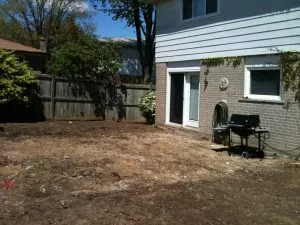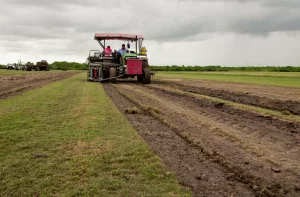We know you take pride in your lawn and making sure it looks lush and green all year round, but sometimes, despite your best efforts, those dreaded brown patches start to appear and the grass begins to die off. It’s not a fun thing for any homeowner to deal with, but it’s a necessary one. See this guide and learn how to take care of your lawn when it starts to show signs of losing life.
and the grass begins to die off. It’s not a fun thing for any homeowner to deal with, but it’s a necessary one. See this guide and learn how to take care of your lawn when it starts to show signs of losing life.
Cleaning out your lawn
First, you’ll want to remove those nasty patches of dead grass. The best time to do this varies depending on the grass you use (late spring for warm season grasses and early fall for cool grasses). How you do this depends entirely on the amount: you can do it manually if there aren’t too many affected areas, but if it seems overwhelming then you may want to consider renting equipment, such as a dethatcher.
Once you’ve determined the damage, loosen the soil by wetting it with a garden hose and dig with a shovel to remove the patches of dead grass. Dig deep enough to remove the grass with the roots so you can expose fresh soil.
After that, all you need to do is collect the dead grass in something like a bag or wheelbarrow and toss it in the proper bin.
Adding the right amount of topsoil

Then there’s the matter of volume. Take the number of inches you’ll need and multiply it by the length and width of the plot with which you’re working. This should give you an accurate number and ensure you add the right amount to help your new grass grow.
How to lay sod and keep it alive
Now you’re ready to add sod to your lawn for that fresh, green grass. First, clear the area of any debris that’s lying around. When that’s done, compact the soil by walking over the area to which you’re adding the sod, then create a till with a garden rake and make sure it’s level.
After that, you’ll be able to water the surface, but make sure this is done at least 36 hours before you lay the sod down. When it’s ready, fertilize the area. Then you’ll be all set to start laying down the sod. Push down on the edges to make sure there are no gaps.
The next steps are watering – you’ll want to do this as soon as it’s laid down, and keep doing it thoroughly for the next week or so, until the rooting is firm. After a week, keep the sod healthy by cutting it (no more than 1/3 of length).
That’s it! Follow these steps and you’ll be ready to get rid of that old dead grass and install a fresh, lush new lawn.
Give us a call to get outfitted with the supplies you need to handle this project on your own.
Sod Farm courtesy of U.S. Department of Agriculture

